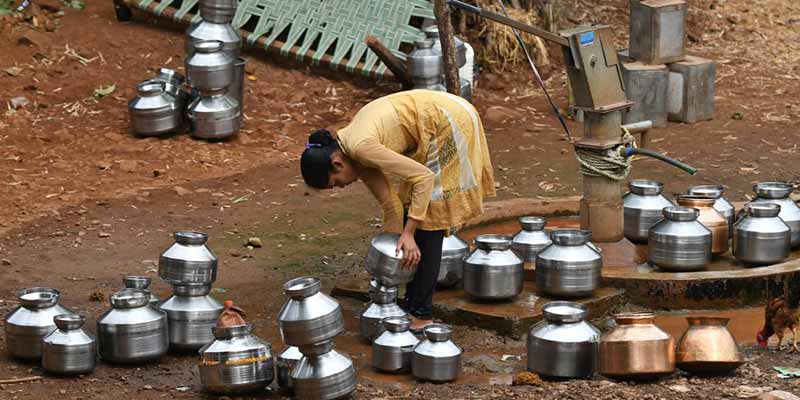- India
- Mar 20
Explainer / Mapping India’s aquifers
Union Minister Rattan Lal Kataria informed the Lok Sabha on March 19 that the Central Ground Water Board (CGWB) is implementing the National Aquifer Mapping and Management (NAQUIM) programme, which envisages the mapping of aquifers (water bearing formations), their characterisation and development of Aquifer Management Plans to facilitate the sustainable management of groundwater resources.
Background
The CGWB has been entrusted with the responsibilities of developing and disseminating technologies, monitoring national policies for the scientific and sustainable development and management of India’s groundwater resources.
The CGWB periodically takes up various studies, which include groundwater management studies, exploratory drilling programmes, monitoring groundwater level and water quality through a network of groundwater observation wells etc and the result collected is shared with the concerned states for taking up suitable groundwater specific interventions.
Water being a state subject, initiatives on water management including conservation and artificial recharge to groundwater in the country is primarily states’ responsibility.
NAQUIM was initiated as a part of the Ground Water Management and Regulation scheme to delineate and characterise the aquifers to develop plans for groundwater management.
What is aquifer mapping?
Aquifer mapping is a process wherein a combination of geologic, geophysical, hydrologic and chemical field and laboratory analyses are applied to characterise the quantity, quality and sustainability of groundwater in aquifers.
There has been a paradigm shift from “groundwater development” to “groundwater management”. An accurate and comprehensive micro-level picture of groundwater in India through aquifer mapping in different hydrogeological settings will enable robust groundwater management plans at the appropriate scale to be devised and implemented for this common-pool resource.
This will help to achieve drinking water security, improved irrigation facility and sustainability in water resources development in large parts of rural India, and many parts of urban India as well.
Significance of aquifer maps
The aquifer mapping programme is important for planning suitable adaptation strategies to meet climate change also. Thus the crux of NAQUIM is not merely mapping, but reaching the goal of groundwater management through community participation.
Aquifer maps and management plans are being regularly shared with state governments through the State Ground Water Coordination Committees, chaired by the concerned principal secretaries of the respective states and also with the respective district authorities for their suitable groundwater specific demand side and supply side interventions.
To facilitate participation at the grassroots levels, public interaction programmes are being regularly organised by the CGWB in which aquifer maps and management plans are discussed in detail.
The social outputs and benefits are less tangible but their significance cannot be undermined. Involvement of community and stakeholders would enable the state governments to manage their resources in an efficient and equitable manner, thereby contributing to improved overall development.
Demystification of science will result in better understanding of aquifers at community level. The amalgamation of scientific inputs and traditional wisdom would ensure sustainable groundwater resource management.
Community participation and management would ensure a sustainable cropping pattern, thereby contributing towards food security.
Out of the total mappable area of nearly 25 lakh sq km, so far aquifer maps and management plans have been prepared for an area of nearly 11.8 lakh sq km spread over various parts of the country.
As per the groundwater resource assessment carried out jointly by the CGWB and state groundwater departments, 1,186 assessment units in the country have been categorised as over-exploited, of which aquifer mapping has been completed in nearly 75 per cent units.
The government has launched a Jal Shakti Abhiyan, which is a time-bound campaign with a mission mode approach intended to improve water availability including groundwater conditions in the water stressed blocks of 256 districts in India.
In this regard, teams of officers from central government along-with technical officers from Ministry of Jal Shakti were deputed to visit water stressed districts and to work in close collaboration with district level officials to undertake suitable interventions for sustainable water management.
Manorama Yearbook app is now available on Google Play Store and iOS App Store

